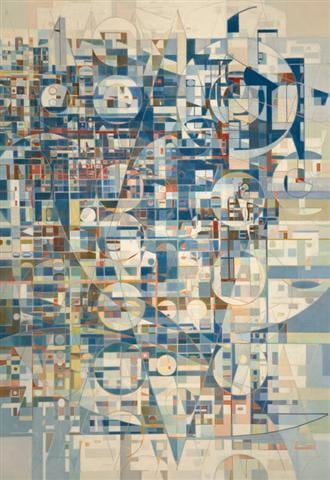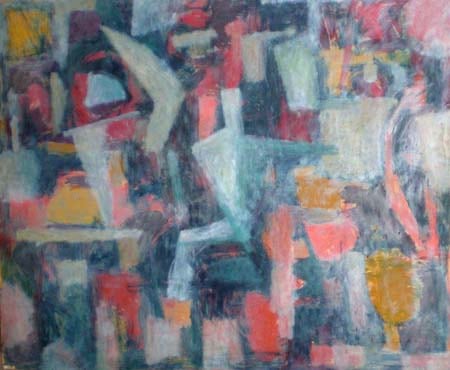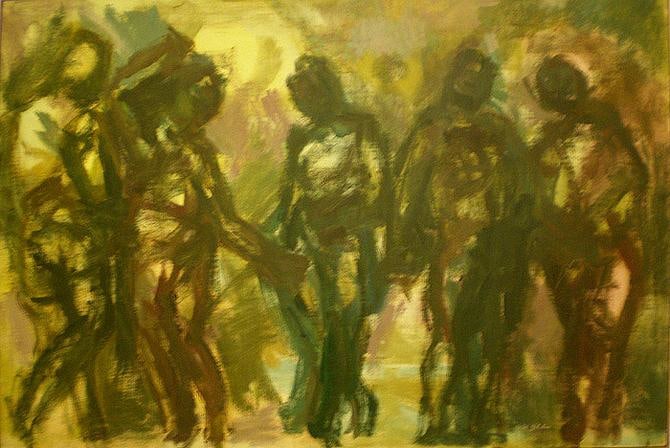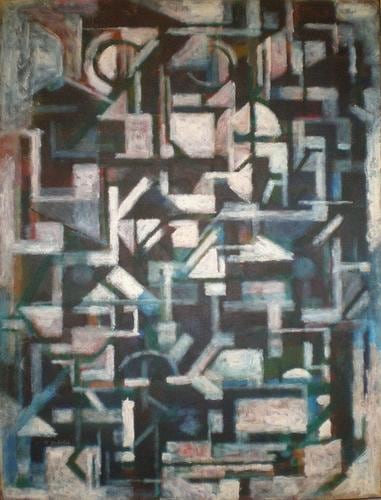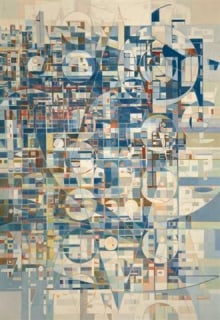
MAURICE GOLUBOV (1905-1987)
“If you can imagine a point moving, it becomes a line. A line becomes a surface and a surface becomes a cube. If you move the cube, this is infinite already because you are suggesting freedom.”
-Maurice Golubov on the “fourth dimension”
For the first twelve years of his life, Maurice Golubov existed in a state of disbelief. He heard firsthand, the horror stories of his father being kidnapped as a child and sent to a czarist camp for eight years. In 1915, as a band of refugees, he accompanied his mother and his siblings through Eastern Europe, taking flight from the atrocities which abounded with the onset of World War I; and he painfully experienced traumatic months when he was unwillingly separated from his family during their plight to the U.S in 1917. Given this understanding of early childhood trauma it is not surprising that Golubov would later use painting as a forum which with to reconcile his thoughts on the spiritual and transcendental in life.
With an early pre-occupation towards Jewish mysticism and other Eastern philosophies pertaining to the transcendental, Golubov spent his entire artistic career attempting to define the reality in them as they compared to daily life. His reconciliation of these ideas became apparent through his development of the “fourth dimension”; a theory which was, from the beginning, primarily self-evolving and without outside influence. In fact, Golubov’s earliest works reference ideas, styles and formal components similar to that of the Russian Constructivists and Mondrian, but without ever seeing their work. It is perhaps this key aesthetic which makes Golubov such a unique artist.
Using mathematics and the structural components of geometry as the underlying grounding for his aesthetic, Golubov created a new use for forms associated with math, including squares, circles, and lines. In his mind, these forms, juxtaposed and intercepted by one another formed another dimension, of energy and illusionism, similar to the broken, hidden planes of Analytical Cubism. This energy was suggestive of a fourth dimension; that of movement and freedom from the fixed planes they represented. In essence Golubov was reconciling the plasticity of his medium with the suggestion of something implied, but nonexistent.
Like Cezanne, Kandinsky and Mondrian, Golubov felt that art was a spiritual undertaking. Therefore, while formally the “fourth dimension” represented a certain freedom of the fixed planar elements from the canvas’ space, it also suggested a realm beyond the physical, that of infinite possibility.
Throughout his entire oeuvre Golubov painted both figurative and abstract compositions. His figurative works represent “the metaphysical figure”, displaying a dignity that transcends the ordinary. For this reason his figures appear many times in frieze-like arrangements, a traditional form of representing the rich and powerful. Although his oeuvre contains no thematic progression, in the likes of a true genius, his earliest compositions and latest compositions differ only in the intensity of their details and colors, not in their original concept.


